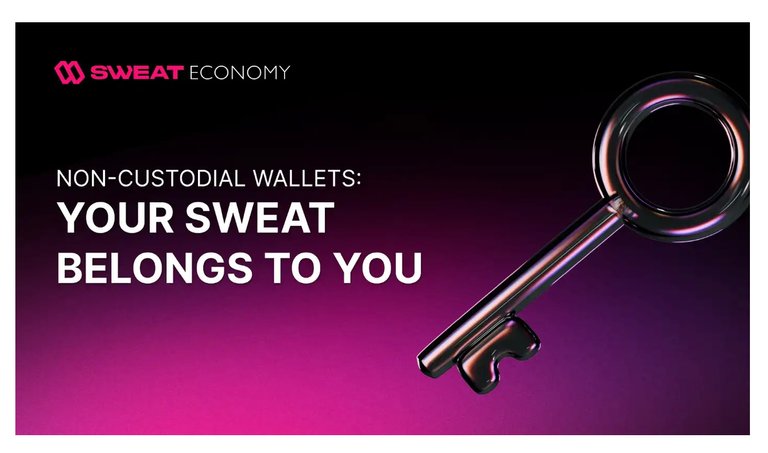
Non-custodial wallets: your SWEAT belongs to you
Not your keys, not your crypto. You may see this across crypto communities, but what does it really mean?
Public key: a public blockchain number required to identify who you are sending funds to, like a bank account number
Private key: more like a password, the private key is used to access your funds and sign transactions
The recent bankruptcy of FTX highlights the importance of understanding custody. When you place your crypto on a custodial service, like an exchange, you hand over custody of that crypto. The same is true of many other apps and services.
Custody is another word for ownership or control. When you place your crypto with a custodial service, like an exchange, you are handing over the custody of your private key and, therefore, handing over control of your funds. Another example of a custodial service is your bank. You may have login details, pins and passwords, but if the bank wants to close your account or block your access, they can do so unilaterally.
This is why non-custodial wallets are attractive. They give you full control over your assets and nobody is able to do anything with your account without your permission.
Sweat Wallet is a non-custodial wallet. This means that even we, the Sweat Foundation, don’t have access to the SWEAT you have claimed and which you now hold in your wallet. We do not have your private keys and therefore we do not have custody of your assets.
We designed it like this to empower you by giving you ownership of the rewards you generate by moving.Non-custodial
Users of a non-custodial wallet must take responsibility for their private keys, which you use to access your crypto. If you lose your keys, you lose your crypto.
Responsibility has a downside. If you lose your private keys (or your secret phrase) there is nobody who can retrieve your assets. This is why the email that we sent you to activate your non-custodial wallet had “Do not delete! Do not forward!” on it — it contained your secret phrase that allows you to take custody of your assets in the Sweat Wallet.
It sounds scary, but this is part and parcel of the individual responsibility and autonomy that cryptocurrencies were designed to create. Don’t forget that Bitcoin was, in part, a response to the 2007/8 financial crisis, which highlighted that the money stored in banks is not owned by the customer. You are giving the bank custody of your funds, and the bank does all sorts of things with your funds to put the money to work. Crypto exchanges do so too.
Non-custodial wallets put you in charge of your funds. This does not mean that they are 100% secure at all times. Hot wallets, such as Sweat Wallet, Metamask, and Trust Wallet, are ‘hot’ because they are designed to be used and are, therefore, connected to the internet, which leaves a degree of exposure. Cold wallets, such as the Ledger Nano, are offline and designed for long-term storage of crypto.
Credit - medium.com